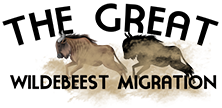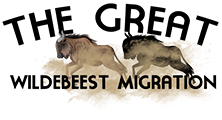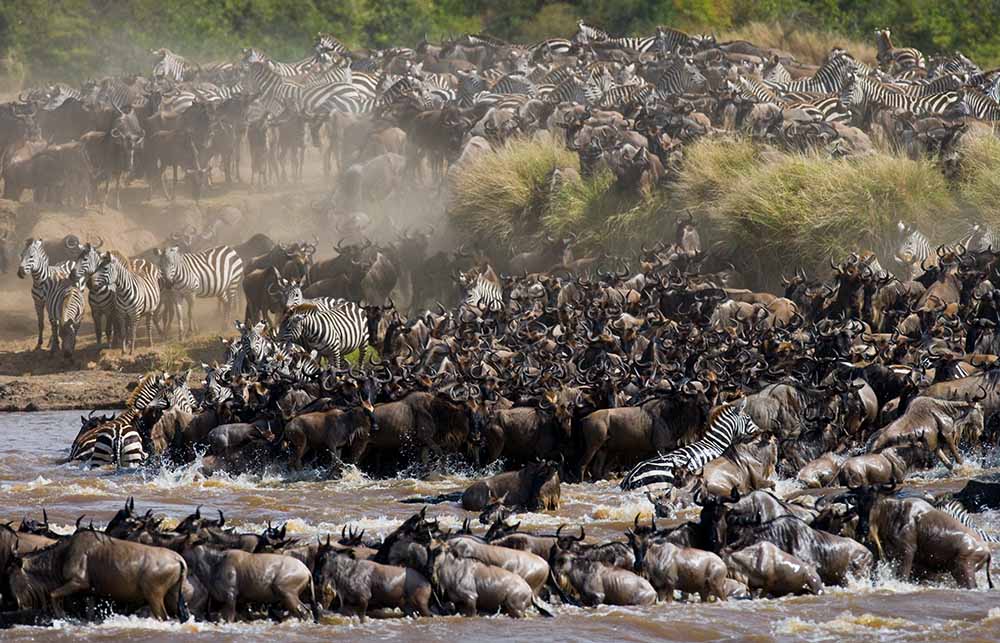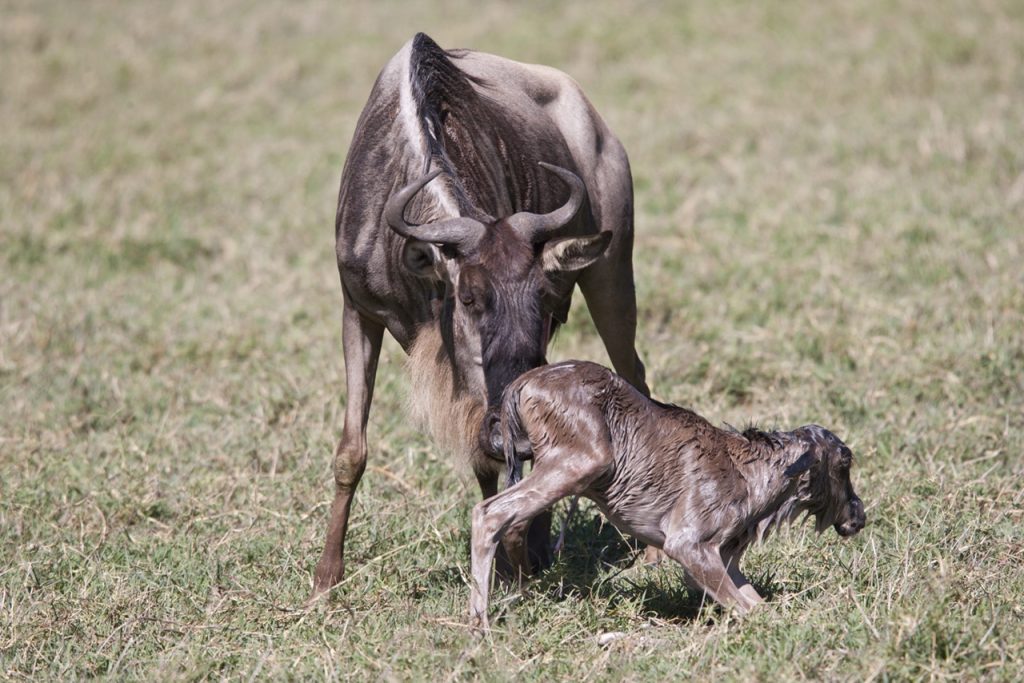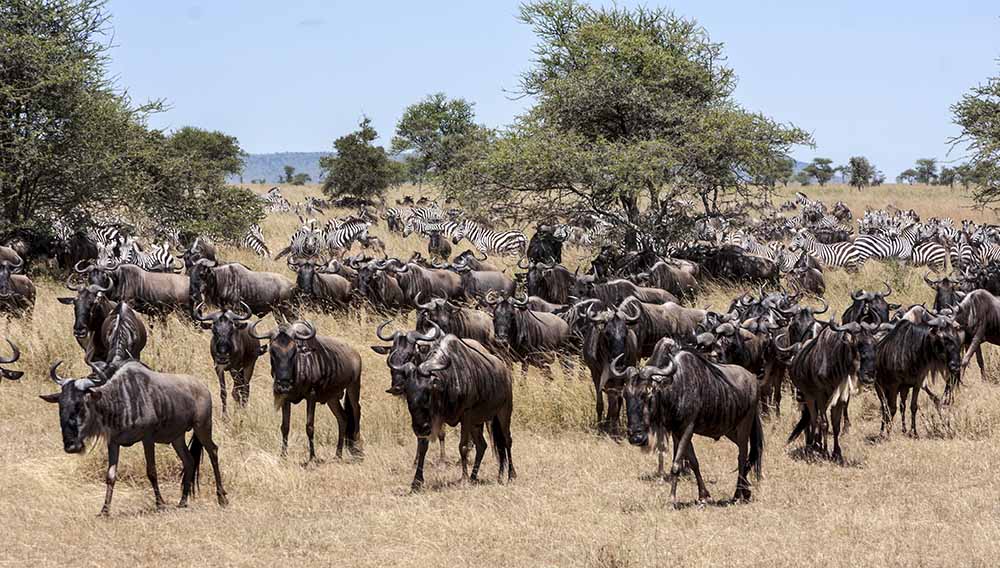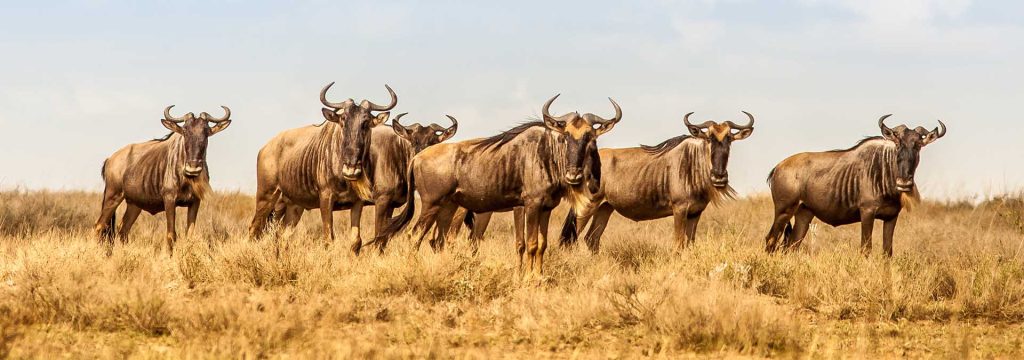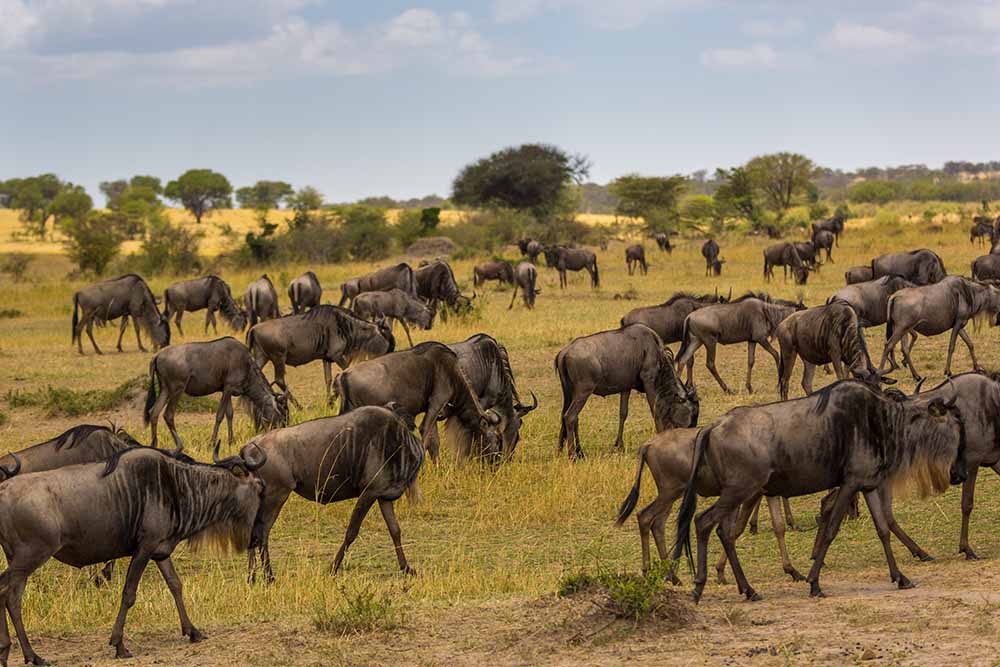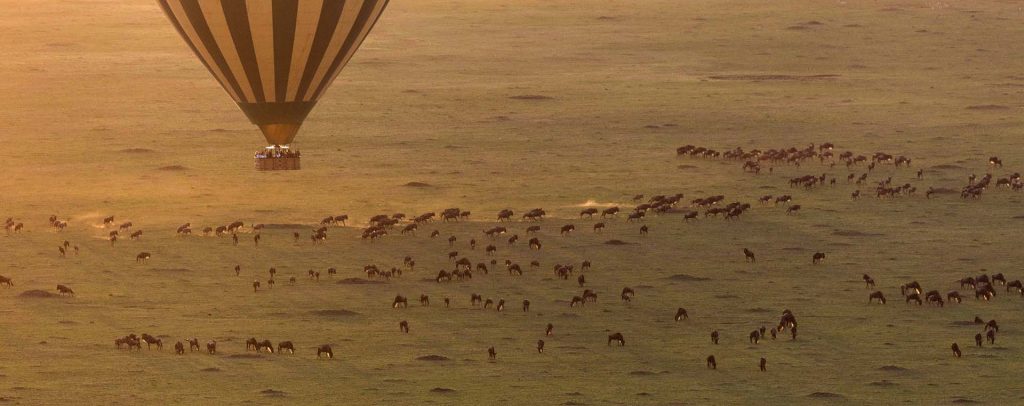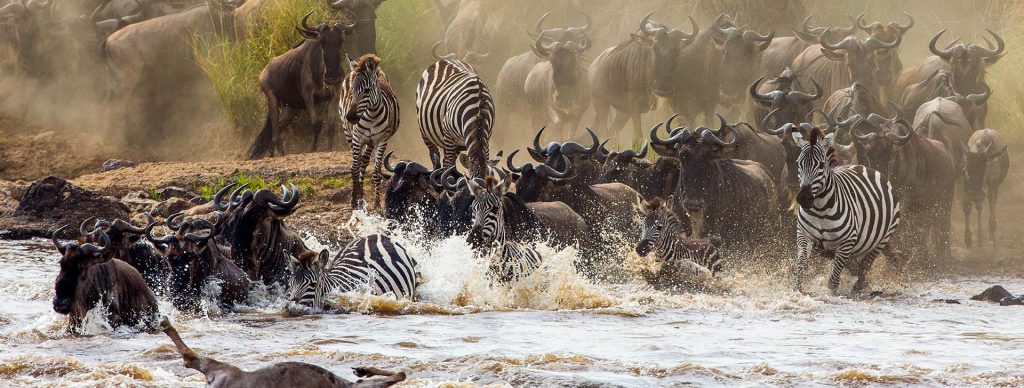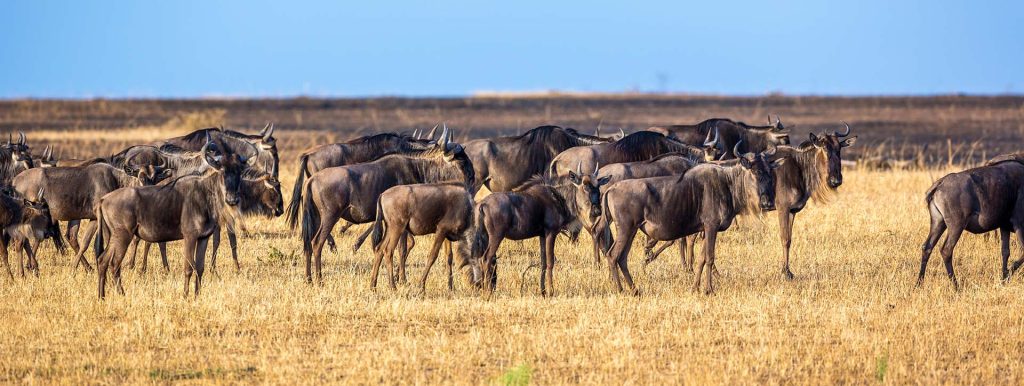Facts about the Great Migration
- Around half a million calves are born in two months
Roughly 400,000 wildebeest calves are born every year between January and early March in the southeastern plains of the Serengeti. It’s also a general calving season, as zebras and antelopes also give birth to young during this period. For many, this is considered the best time to visit the Serengeti, as it’s exciting to see the newborn animals.
The dangers of the Great Migration to its participants cannot be overstated. The wildebeests, zebras and antelopes must confront thirst, hunger, exhaustion and predators. Predators include lions, leopards, cheetahs, African wild dogs, spotted hyenas and crocodiles.
The most vulnerable members of the Great Migration herds include, of course, the young. Only one in three calves will make it back alive in a year to the Serengeti’s southeastern plains. So the continuation of the Great Migration is, in a sense, a numbers game.
- The grunt of each wildebeest is unique
One of the other names for a wildebeest is gnu. The g is silent, so it’s pronounced ‘nu’. This is an onomatopoeic word for the grunting sound the animals make
What’s truly astounding is that each wildebeest has a unique grunt – a unique nu, if you will. These sounds help them to locate to each other. So when it’s dark, or there’s a large herd, a mother and foal, for instance, can find one another by listening for their unique nu’s.
- Calves are able to stand minutes after birth
Wildebeest and zebra calves are amazing. They quickly stand after birth, and soon thereafter can start running. In fact, wildebeest calves can walk on their own within minutes of being born. And within days they can keep up with the herd and even outrun a lioness! Zebra foals can also pretty much walk and even run after an hour.
We call species like this precocial, meaning their young are born in an advanced state. The hoofed animals of the Great Migration are precocial to help them survive. They live with lions, leopards and other predators lurking around, watching, so if their young were unable to move, they’d literally be sitting targets.
Precocial babies need long gestation periods, since the fetuses must grow to greater maturity in utero. The gestation period of wildebeests and elands is nine months. For zebras, it’s 13 months!
- Wildebeests rely on zebras for their survival
The animals of the Great Migration are grazers. The very reason for their non-stop migration is the search for green pastures.
The wildebeests of the Great Migration are fussy eaters. They only eat the shoots of grass. Zebras, on the other hand, aren’t picky. They eat the fresh, long grass, and in so doing, ‘mow it down’. The wildebeests can then come in and access the shorter grass they need to survive.
So the roughly 200,000 zebras that travel harmoniously alongside the wildebeests of the Great Migration essentially enable the survival of the latter.
- Nile crocs can survive on one or two feedings a year
Every year the herds of the Great Migration must cross the Mara and Grumeti Rivers of the Serengeti to follow their course towards greener grass. These river crossings are perilous occasions for a few reasons, not least because of the hungry presence of Nile crocodiles.
Nile crocs can weigh up to 750 kg (holy smokes!). And the crocs of the Grumeti are some of the biggest in Africa.
You would think such large beasts would need to eat constantly to survive. Yet, amazingly, some of the larger crocs can sustain themselves on just one or two wildebeest feeds per year!
The giant reptiles gorge themselves, and then go into semi hibernation. They actually slow their heart rate and metabolism. Amazing.
- Wildebeest hooves leave a scent trail for others to follow
The Great Migration doesn’t consist of one, solid herd. Rather, there’s a main herd and satellite herds, all of which endlessly morph, splinter and coalesce over time.
The herd is at its most cohesive from late December to early March, when all the wildebeests (and other hoofed participants) gather together in the Serengeti’s southeastern grasslands. This is calving season, a vulnerable time, and they’re seeking protection in numbers from the ever-prowling predators.
When the animals are back on the move, however, the herd splinters and the animals spread out. This is especially the case when there’s plenty of green grass.
New evidence suggests that the glands in the wildebeests’ hooves secrete pheromones and faeces that stays on the ground. This allows their fellow wildebeests to follow their smell. And so the disparate herds can stay connected and link up.
- Adult lions can eat 40 kg of wildebeest in a sitting
Lions don’t eat all the time, but when they do, they go for it! Lions usually eat every three to four days, averaging around 6 kg a feed. But they can go for longer than that – even for a week or so.
After a long spell without food, lions go big. In fact, a fully grown male lion can chomp down on 40 kg (88 lb.) of wildebeest in one sitting. That’s about a quarter of its own weight!
